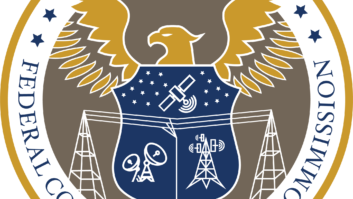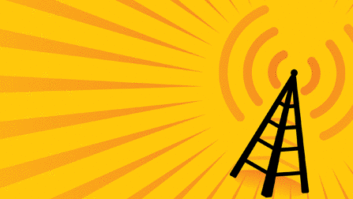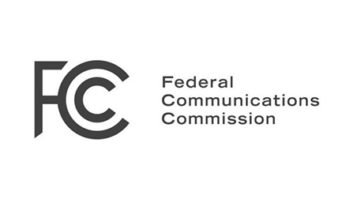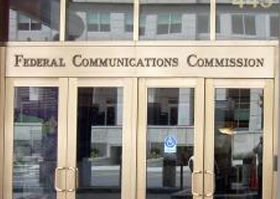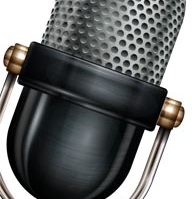Larry Langford is owner of WGTO(AM) and W244ds in Cassopolis, Mich. He has been in radio since 1965. His commentaries on radio issues such as those facing AM owners are a recurring feature. Read his past articles by searching for “Langford.”

The FCC is to be commended for the multistep step process that allowed thousands of AM stations to get on translators. The 250-mile move-in limit and the phased-in approach by class was controversial but seemed to work out well. It was also a wise move to allow only one per station in the revitalization move. I was among those who feared that the “big boys” would buy-up several translators and seal up a market preventing smaller AM stations from getting anything.
The commission has also shown a light in the tunnel by proposing new interference criteria that should eliminate some of the ridiculous complaints of full power stations that in some cases cover vast territory yet complain about a small hole created by a translator at even the 40 dBu range. Most promising is the proposal to allow frequency changes beyond adjacent channels to alleviate interference.
Make Acquisition Easier and Fraudproof
Now that just about all AM stations have had an opportunity to get at least one translator on air, we can look at changing the overall rules without worrying about a flood of applications or abuse of process. And since we are still in an AM freeze we need not worry about a bunch of new AM apps just to get an FX in a market. I don’t want to propose anything that would overly upset the LPFM people because despite some rather nasty FCC filings made by one of their associations, AM stations and LPFM stations typically get along. But I would like the commission to explore and seek comment on some additional rules changes to the cross-service regulations.
[Read: Should Required NRSC Measurements for AM Stations Continue?]
To be specific, while not entertaining any new applications, the commission would be wise in my opinion to allow broader move criteria for FM translators that will be used for AM service as some stations find they can add a second FX to solidify market coverage, but nothing is available in the immediate area. I would suggest a 100-mile permanent radius on moving a cross-service translator for fill-in service but with the caveat that it is permanently assigned to the AM station, as was the case in the last revitalization round. That restriction was the best anti-trafficking move the FCC ever made.
Also allow the use of any available frequency that works in the non-reserved band. As I have shown in earlier writings the standard process of showing overlapping 60 dB contours to move a translator has been abused routinely with fake applications and fake license requests that waste FCC resources and create ghost stations. Let’s just eliminate the smoke and mirrors and clean up the process with an honest way to do the same thing. Many very low-power educational nonfill-in translators could be moved and open frequencies for LP100 LPFMs to provide true local service.
Programming Is Programming, AM or FM
And why now do we still make a distinction between rules for AM origination versus FM origination for nonfill-in translators? We have seen independently owned translators set up to extend commercial FM stations outside the protected area at power levels dictated by Height Above Average Terrain. But the current rules directly prohibit an AM station from feeding an out-of-market translator under any circumstances. Why the discrimination against the AM station as a programming source? If the translator is independently owned why should it not be eligible to rebroadcast any station with permission?
Use Real-World Engineering in Contour Protection.
When the now famous or infamous Docket 80-90 was enacted that allowed many new Class A FM stations to go on air in the 1980s it was done by taking a more realistic look at receiver performance and actual interference levels. Earlier FCC regulations were based on receiver performance of the 1950s and front ends that were very insensitive, unstable and broad. Back then it really took a lot more signal to fully quiet a receiver of the time. And in most cases, you needed an outdoor antenna even in the city. But now, a typical car radio will get full quieting out to 45 dBu or more. Current rules for adjacent station protection are based on those antiquated radios of the past.
I have never heard of a translator causing actual third-channel trouble on a modern receiver. And any decent car radio will pick up second-adjacent stations on the same property as the translator tower. So, if we relax the second- and third-adjacent protection levels we will see more opportunities to relocate translators and handle LPFM requests as well with no real-world issues.
I would still agree that translator stations that go on air and show real problems for second-adjacent stations would be required to fix or shut down but how many real complaints have we had on second and third? To comply with current rules, some translator applications near the edge of the adjacent station’s protected contour need tall towers and four-bay systems to put a null above ground level — an expensive and unnecessary requirement in the real world of listening. Real interference issues are normally about co-channel or first-adjacent.
Allow Auxiliary Sites for Seamless Emergency Operation in the Public Interest
By regulation, translators provide secondary service, but the reality is many are serving as primary broadcast sources to the community. Well-designed stations invest good money in standby aux sites to make sure they can stay on the air if the main antenna site goes down. And the FCC allows aux licenses for AM, FM and TV but not translators!
If you have a translator with a tower emergency, you can build something elsewhere and file for an STA but why should that be necessary? Translators that operate during the night when the AM station is off air are a de facto primary service provider since there is nothing if they are silenced by a disaster or failure. And they should be allowed the same ability to file for standby auxiliary antenna sites that could simply be switched on in time of emergency. The same coverage limitations would apply.
It’s a lot easier to flip a switch than to have nontechnical personnel tackle the problem to acquire a new site, figure out how to calculate 60 dBu coverage and make sure it does not exceed the current 60 dBu then file the STA! And a vicious storm or major flood is not the time to find qualified consulting engineers to make it happen. I will not hold my breath for any of this, but I think its food for thought and fuel for discussion.
Radio World invites industry-oriented commentaries and responses. Send to Radio World.

